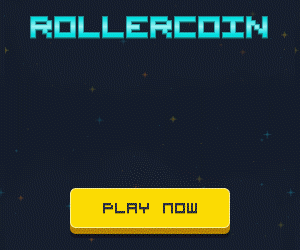In today’s PlaytoEarngames blog, we discuss the challenges in Web3 and how Sequence is playing a pivotal role in overcoming them. The blog also shares insights from Michael Sanders on the web3 sector and the potential web3 games have to offer.
Web3 is a revolutionary technology that combines new technologies to give game developers and players new ways to make money and improve their gaming experiences. It used to be that improvements in development tools and graphics hardware were what drove game development.
In the past ten years, improvements in game design, ease of access through digital and mobile platforms, and ways to make money through free-to-play models and in-game ads have made gaming the most popular form of entertainment.
Web3 Gaming Provides Ground for Creativity and Innovation
Recently, Michael Sanders, the creator of Sequence, talked about the ongoing development in the web3 sector and highlighted the potential of web3 games.
“Web3 is a technology that unlocks creativity and monetization benefits for game developers and builders, while at the same time enabling flexibility and new experiences for players. We’re seeing Web3-based games enable higher player retention and spending.
Sanders further quoted an example of Hunters On-Chain. “The action RPG game leverages Web3 by BoomLand, sees 4.5x higher D30 retention, 7.2x higher ARPU, and bigger spending from whales compared to the Web2 version of the game. And as the utility of Web3 and blockchain expands, perhaps beyond the core gaming experience, players will find even more value, especially when brands begin to curate new and immersive experiences.”
With easily integrated developer tools, web3 technology empowers game developers to add more creativity to their projects and enhance the infrastructure.
Web3 is Accessible to Studios of All Categories
Games with Web3 features are being made by a wide range of studios, from independent artists and new studios to big publishers around the world. With the second version of Web3, the technology is a lot easier to use. Because of technical issues with the first generation, developers had to spend a lot of time and money on blockchain integration and implementation instead of designing games. As technology at the time wasn’t very good, designers and marketers had to make choices and use strategies that didn’t always give players the level of comfort they’re used to today.
Sanders says that most of Web3’s technical and onboarding problems have been fixed, which means that game developers can make groundbreaking user experiences even if they don’t know a lot about Web3.
The Role of Web3 in Increasing Player Engagement
In-game marketplaces are an important part of Web3 games that help them get higher LTV. Sanders claims that Horizon’s Web3 card game Skyweaver won the 2022 NFT Insider award for best blockchain game. The in-game market is where more than 90% of all game items are bought and sold. It says that no outsiders should get a cut of the game’s transaction costs or royalties.
An in-game marketplace also keeps players from leaving the game to go to a different website, which would stop them from enjoying the game as planned. This makes the player feel more immersed because they now have the in-game items they bought. It also makes them more loyal and interested in the game because they have a stake in its success. Gamers can care more about the success of the game and its ecosystem if they are proud to show off their virtual assets to other gamers and people outside of gaming.
But you don’t need to know about new and complicated economics to play Web3 games. The numbers show that these games have higher LTV, consumer spending, and conversion rates even when they look a lot like other games or free-to-play features.
How Sequence Overcame Challenges to Create Incredible Web3 Games
Many developers are still getting used to Web3 technology, which makes it very hard to make a highly immersive Web3 game. The people working on Sequence are very good, but the game had some problems that stopped it from reaching its full potential for a while. But the studio was able to get around this by using real-time solutions.
Set up an account and register as a new user: Sequence’s wallet architecture gets rid of problems like onboarding and account creation, making it quick, easy, and safe to create a wallet and join a game. It also makes things easier and takes the focus off of gas prices by letting developers sponsor transactions. The best smart contract wallets on the market are made by Sequence. They let users create an account with just two clicks, using either their current email and social media credentials or the game’s authentication system.
In-Game Purchases: Sequence’s built-in checkouts and debit or credit card payment options make it easy to buy content inside the game. This makes it easier for developers to get new players and makes it easier for players to buy these things. The Sequence Marketplace Engine also lets programmers make a “white-labeled” marketplace, which makes it easier for players to trade.
Access to Blockchain Data: The Sequence Indexer makes it easy for games to query blockchain data and give it to players in real-time. This lets players keep track of their assets, the items they can use in-game, and the items they can trade with other players.
Games and other interactive experiences made by consumer brands, sports teams, and others in the industry will help Web3 become more popular. But studios can see more people playing web3 games if they can get past technological problems and make the gameplay and graphics more immersive.
Follow us on our social networks and keep up to date with everything that happens in the Metaverse!
Twitter Linkedin Facebook Telegram Instagram Google News Amazon Store











































